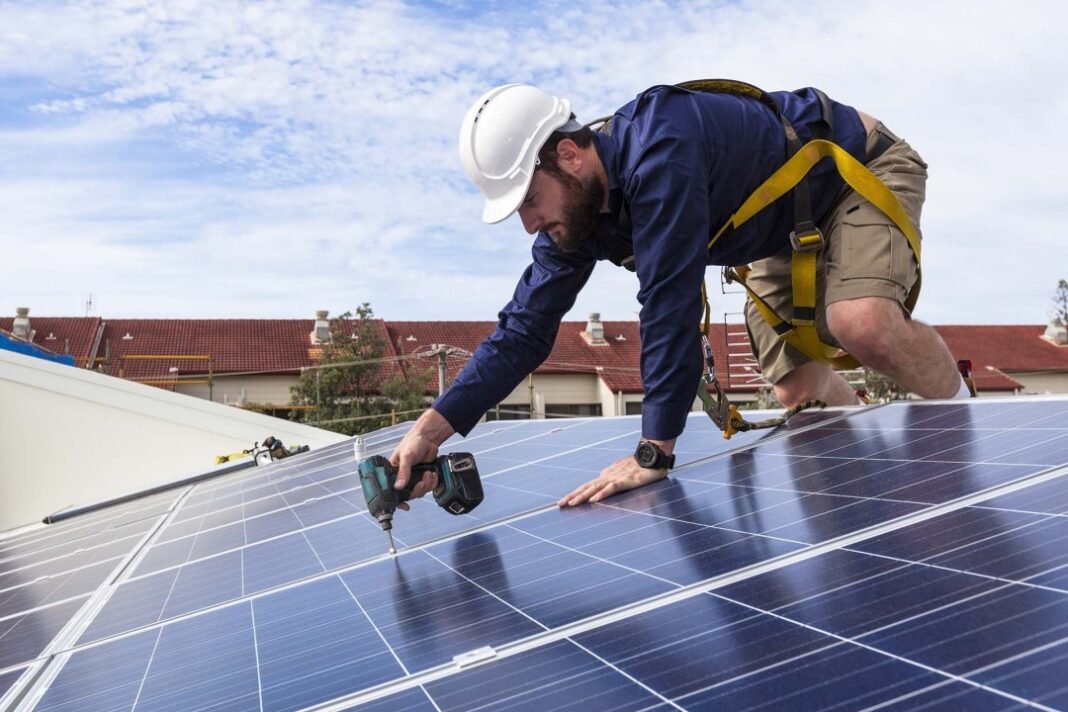Switching to solar energy is an attractive option for many homeowners looking to save on energy bills and reduce their carbon footprint. However, understanding the cost of solar panel installation can be a complex process. This guide will break down the factors that influence the cost, the financial benefits, and what you can expect from the investment. By the end, you’ll have a clearer picture of what it takes to bring solar energy to your home.
Understanding the Basics of Solar Panel Costs
Initial Investment
The initial cost of solar panel installation is a significant consideration for homeowners. This cost includes the price of the solar panels, inverters, mounting hardware, and the labor for installation. On average, homeowners can expect to pay between $15,000 to $25,000 for a typical residential solar system before any incentives or rebates.
Factors Affecting Installation Costs
Several factors influence the total cost of solar panel installation:
- System Size: Larger systems with more panels generate more electricity but come with higher upfront costs. Your energy needs will determine the optimal system size.
- Panel Type: Monocrystalline panels, known for their efficiency and durability, are generally more expensive than polycrystalline or thin-film panels.
- Roof Characteristics: The type, angle, and condition of your roof can affect installation costs. Complex installations on roofs with steep pitches or multiple levels may incur additional charges.
- Location: Installation costs can vary by region due to differences in labor rates, permitting fees, and local incentives.
Financial Benefits of Solar Panel Installation
Energy Savings
One of the most compelling reasons to invest in solar panels is the potential for substantial energy savings. By generating your own electricity, you can significantly reduce or even eliminate your monthly utility bills. In many cases, solar panels can produce enough energy to cover most, if not all, of your household’s electricity needs.
Incentives and Rebates
Various federal, state, and local incentives can help offset the initial cost of solar panel installation. In the United States, the federal solar tax credit (Investment Tax Credit, ITC) allows homeowners to deduct a significant portion of their solar installation costs from their federal taxes. Additionally, many states offer rebates, grants, and other financial incentives to encourage solar adoption.
Net Metering
Net metering is a billing arrangement that allows you to sell excess electricity generated by your solar panels back to the grid. This can result in credits on your utility bill, further increasing your overall savings. Policies and rates for net metering vary by location, so it’s essential to check with your local utility provider.
Long-Term Financial Considerations
Payback Period
The payback period is the time it takes for the savings from your solar panels to equal the initial investment cost. For most homeowners, the payback period ranges from 5 to 10 years, depending on factors such as energy consumption, electricity rates, and the cost of the solar system. After the payback period, the electricity generated is essentially free, providing ongoing savings.
Increased Property Value
Homes with solar panel installations often see an increase in property value. Prospective buyers recognize the benefits of reduced energy costs and the positive environmental impact, making solar-equipped homes more attractive. Studies have shown that homes with solar panels sell faster and at higher prices than those without.
Personal Narrative: My Experience with Solar Installation
When I first considered installing solar panels, the upfront cost seemed daunting. However, after researching the long-term financial benefits and available incentives, I decided to take the plunge. The installation process was smooth, and the installers were professional and efficient. Within a few months, I started seeing a noticeable reduction in my electricity bills. The federal tax credit and state rebate significantly lowered the overall cost, making the investment more manageable. Now, I enjoy the peace of mind knowing that I’m contributing to a sustainable future while saving money.
Evaluating Solar Panel Efficiency and Quality
Choosing the Right Panels
Selecting the right solar panels is crucial for maximizing your investment. Monocrystalline panels are highly efficient and durable, making them a popular choice for homeowners looking to optimize energy production. Polycrystalline panels offer a balance between cost and efficiency, while thin-film panels are suitable for specific applications requiring flexibility.
Quality and Warranty
Investing in high-quality solar panels from reputable manufacturers ensures better performance and longevity. Most solar panels come with warranties that cover performance and product defects, typically ranging from 10 to 25 years. A robust warranty provides peace of mind and protects your investment.
Future Trends in Solar Energy
The solar industry continues to evolve, with advancements promising even greater efficiency and affordability. Emerging technologies such as bifacial solar panels, which capture sunlight on both sides, and perovskite solar cells, known for their high efficiency and low production costs, are on the horizon. These innovations will make solar energy more accessible and appealing to a broader range of homeowners.
Conclusion
The cost of solar panel installation can be substantial, but the long-term benefits make it a worthwhile investment for many homeowners. By understanding the factors that influence costs, the available financial incentives, and the long-term savings, you can make an informed decision about switching to solar energy. With the right solar panels and professional installation, you can enjoy significant energy savings, increased property value, and the satisfaction of contributing to a more sustainable future. If you’re considering solar energy for your home, this comprehensive guide provides the insights and knowledge to help you navigate the process and maximize your investment.


